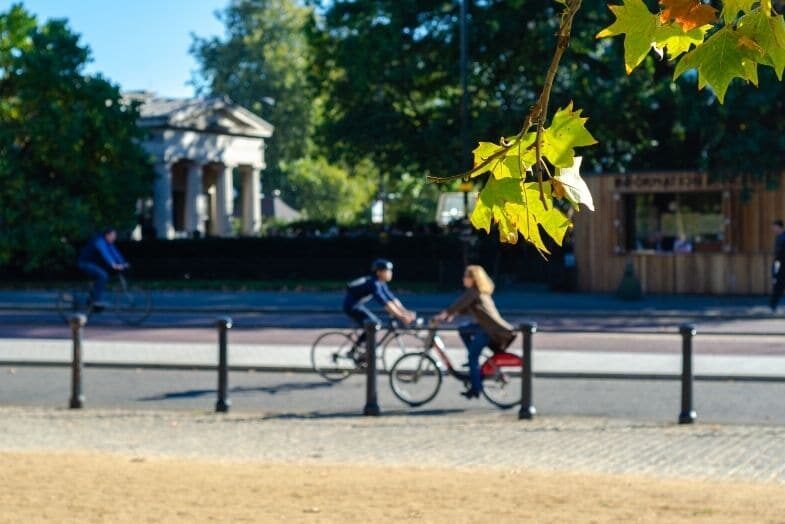
As one of the most progressive, oldest, attractive, most dense and evolved cities in the world, London offers so much to so many people. Tourists, workers, dreamers, the ambitious – all flock to the capital of England to live, to work and to play.
At the time of the last government census in 2011, the population of London had reached 8.2 million. A rise of just less than 10% is expected to take it to 9 million by the time of the next headcount.
Layer upon layer of networks of roads and buildings have sprung up throughout the centuries, which has expanded the infrastructure out and created new links across the enormity of the capital.
Demands on policy-makers have shifted significantly. When it comes to transportation, in the last 125 years of London’s life the horse was overtaken by the bicycle, briefly, as the dominant form of non-walking transport before cars, vans and lorries then dominated road layouts.
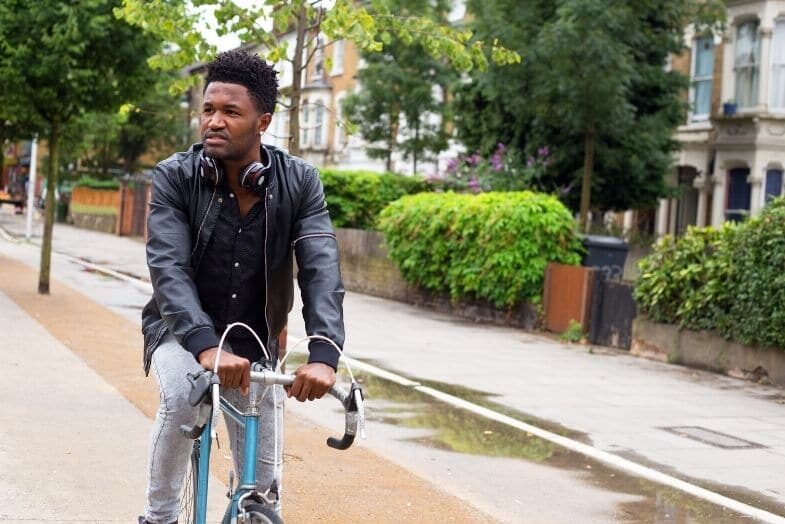
Steps have been taken to integrate public transport into London’s way of life too, with a more integrated rail and bus network seeking to provide alternatives to driving.
Emissions from cars and older diesel-powered vehicles in a congested area, added to more journeys, has led to successive charges for driving in some of the more central parts of the city, a move which has proven unpopular for motorists but a priority for the safety and health of the people who operate in the city. The area has widened recently and this will reduce motorised traffic significantly.
Improving the capacity of the transport network has been high on the agenda of the Mayor of London and Transport for London – two public offices tasked with balancing the accessibility of the capital with the enhancement of life for all who use it.
In a city which runs so directly and so urgently, juggling the needs of every cyclist is difficult. There are lycra-clad commuters who may make long journeys from outside the confines of the large motorway which encircles London, then couriers and fitness fans operating inside the centre, criss-crossing the paths, boroughs and streets whilst sharing an increasingly narrow space with other road users.
Then there are the hundreds of thousands of users of a hire-bike scheme in the city which offers tourists a fresh glimpse of parts as yet unseen. There are comparatively few of the ‘Dutch-style’ of cyclists who are welcomed in other developed cities and help to slow down the pace of cycling whilst increasing the visibility and sense of calm on the network of paths and road. Increasing the pull for this type of rider seems to be a priority for the politicians and will help to level out the noise which exists between supporters and critics of the push to find more space for cycling in London.
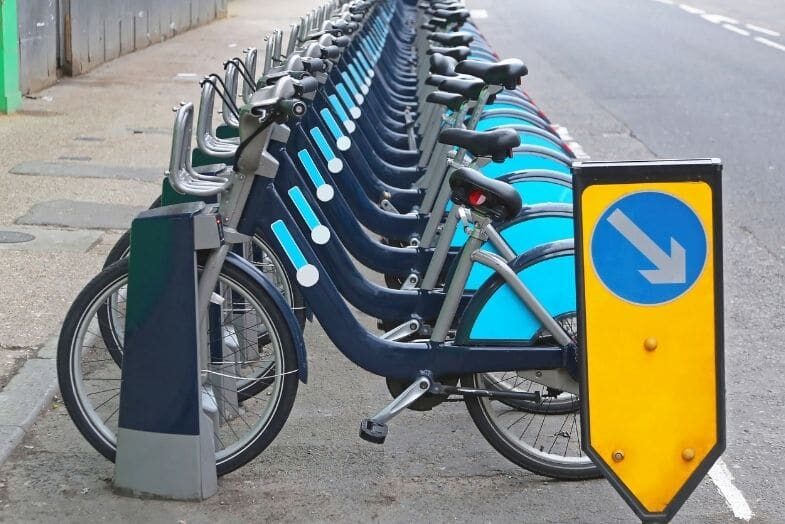
Is London Bicycle Friendly?
London is becoming an increasingly bicycle friendly city. Since 2010, the city has invested significantly on its “Cycling Superhighways” which provide provide a safe and segregated cycling network across the city.
Some of areas of London (in particular Kensington) still lag behind in terms of providing safe space for cycling, but on the whole the city is a much more hospitable area for cycling that it was pre-2010.
Central London is changing for the better in terms of motorised vehicles being limited in more areas in favour of pedestrians, cycles and public transport. London Bridge is only open to pedestrians, bicycles, black cabs, motorbikes and public transport during the day. A big step in the right direction but still a lot of vehicles and distractions for cyclists to deal with.
The centre of London is a very busy environment for everyone. Paying attention and exhibiting a duty of care for everyone around you at all times is all-consuming. If you can make the time to avoid being caught up in a morning rush hour and use the river or parks as your guide, there are plenty of supportive rides, bike shops, bicycling hiring ranks for you to enjoy.
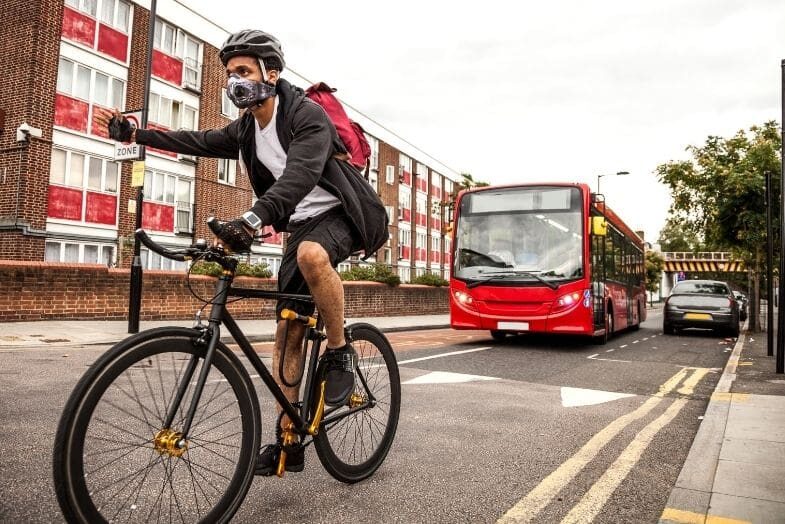
Is London a Cycling City?
Successive elected bodies do seem to think so and have provided finances to make it so. Billions of pounds have been invested since 2008. The per capita spend was broadly in line with Copenhagen. The then London Mayor Ken Livingstone targeted a 400% increase in cycling between 2008 and 2025.
It was starting from a low base however, targeting 5% of all daily trips as being made by bicycle in 2025. By comparison, in 2011, in the UK, the city of York’s figure was already 18%, Cambridge was at 28% and the global benchmark was set by Amsterdam at 37%.
A series of 12 eye-catching cycle superhighways were announced and launched. These faced early criticism as being vote-winners without giving the necessary consideration to the safety and welfare of cyclists. Many were simply existing roads (think about our Monopoly board) painted blue with no kerb to keep them apart from road traffic. One – called CS2 – ran from the Olympic Park in Stratford to the City of London along a very busy Mile End Road and was the subject of ridicule and protest as they were seen to be guiding cyclists onto main roads.
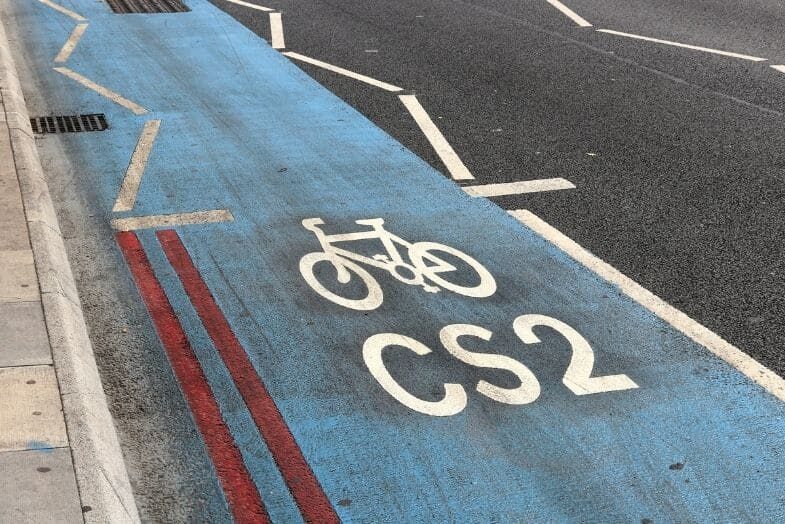
These protests – both from cyclists and non-cyclists – over shared safety concerns and complaints about negligence and blame being passed from pillar to post – led to a reconsideration by subsequent administrators and politicians.
More has been done to segregate motorised vehicles from non-motorised vehicles and create safer spaces in the capital. This has led to increased participation and involvement from the population who have stated in surveys that they want to get more active.
There is still much to do to bring the mindset up towards Denmark and The Netherlands – that is, away from speed and lung-bursting Strava saving times onto comfortable, sociable riding that doesn’t need a shower when you get to work or your meeting.
A bicycle hire scheme created by London Mayor Ken Livingstone but now referred to as ‘Boris bikes’ has added 8,000 bicycles to the network, with docking stations approximately every 300 metres to be found in the central area. Journeys of less than 30 minutes are relatively cheap but you have to log in first and undock the machine.
In March 2018 following some targeted campaigning from protestors and a change of mayor, a £1bn investment in safer and easier cycling was announced to further the improvements in pollution and congestion.
Drawing comparisons with a new rail network taking passengers from the east to west of the city and back again, this ‘Crossrail for bikes’ will create a new bicycle grid, improving existing routes and create new ‘quietways’ in outer London, plus expanding the existing hire scheme out of the centre.
Is Cycling in London Healthy?
There are physical and mental health benefits to cycling. You feel better and more active throughout the day than if you travel by other modes of transport. Emissions still exist though. Volumes of traffic in the capital are reducing through charged use of the roads for the most polluting vehicles.
Is Cycling in London Bad for Your Health?
According to a report commissioned by the current mayor of London, in October 2020 99% of London still missed World Health Organisation limits for nitrogen dioxide emissions. The same report noted a 44% reduction in the levels in the new Ultra Low Emission Zones; there is more progress to be made.
The most polluted routes are Euston Road (main thoroughfare to West London), The Strand (central thoroughfare), York Road (route out of Kings Cross), Elephant & Castle (opens up to routes out east). These areas are dominated by polluting vehicles and carry higher levels of nitrogen dioxide. Most are intended for public transport, lorries and cars but have narrow lanes to accommodate more vehicles.
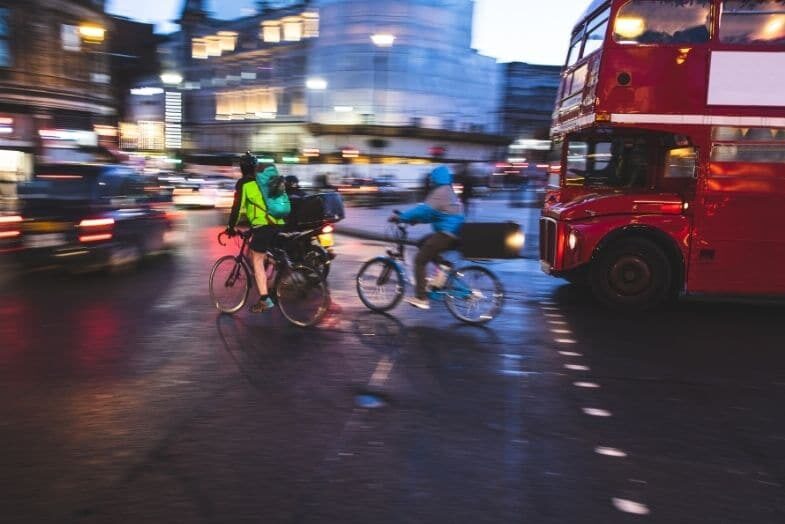
Is Cycling in London Dangerous?
According to German insurance company Coya, who commissioned a report called Bicycle Cities Index 2019, London was the world’s 62nd best city for cycling. Their report included many stats not relating to danger but the more sobering statistics are necessary for comparison.
There were 0.68 fatalities per 100,000 cyclists in London. This compares to 1.77 in Amsterdam, 1.04 in Copenhagen and 0.75 in Paris. There were 1,299 accidents per 100,000 cyclists in London. This compares to 1,019 in Amsterdam, 218.44 in Copenhagen and 318 in Paris. These are all cycling mad cities which have an infrastructure suited to the pursuit. A comparison with New York reveals 0.66 fatalities per 100,00 cyclists and 2,158 accidents per 100,000 in the Big Apple.
The figures would seem to reflect that the chances of an accident reflect the work to be done to improve safety but also that the capital still feels like it’s lanes are used by quick commuters in lycra and less so for comfortable, social riding or utility riding for the shopping or a haircut.
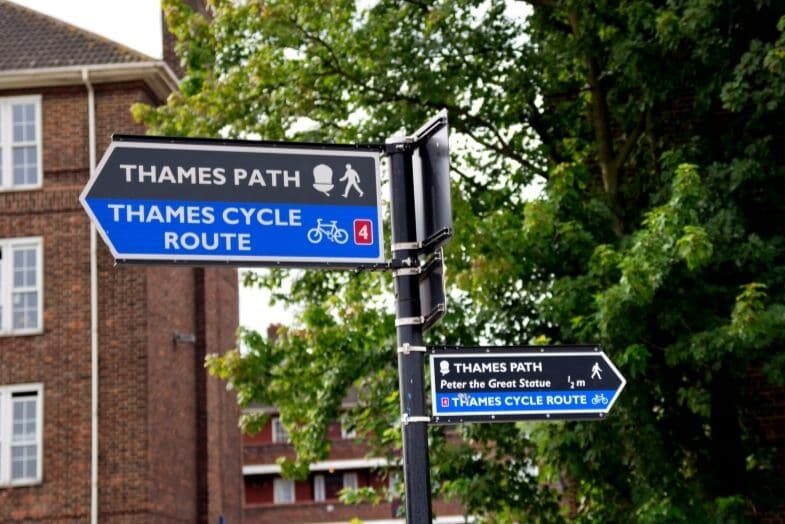
Safe Places to Cycle in London
There are plenty of helpful guides to safer cycling places in London. Some of them specify which routes have the fewest junctions, roundabouts and traffic lights. There are national charities offering guidance and mapping. Not all of the routes are traffic-free. Many take in neglected roads and areas which were once dominated by now-forgotten industries.
The Thames Path from Battersea Park all the way to Greenwich is not traffic-free but well guided by signs and has long stretches along the river giving a good view. There are some side streets to negotiate but so much of London’s rich history to take in.
Of course, no guide to cycling in Greater London would be complete without reference to the royal parks. A route out of town from Big Ben to Richmond is rewarding once you are in the park. Of course there are challenges on all roads and London is no different from other conurbations in terms of crime which are still important considerations for cyclists.
Regent’s Park Outer Circle can be fun if you want to try a few laps and build up a sweat. There are few traffic lights and the company of other cyclists may bring more comfort and safety.
There are canals which will offer you some good routes and a different perspective of the city. Of course you will need to obey any local codes and rules which will rightly favour pedestrians on narrow tow paths but you should find some peace and solace; beware wet and slippery paths, however.
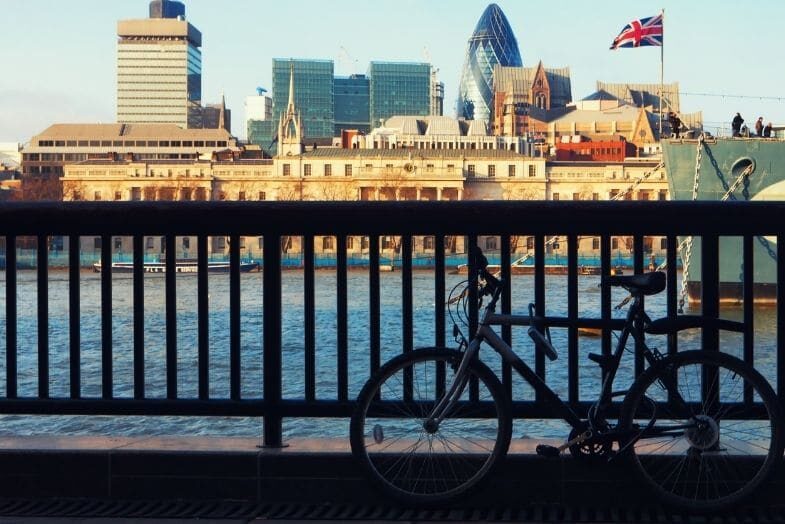
Traffic-Free Cycle Routes in London
The Olympic Park, Epping Forest, Hampstead Heath, Regent’s Park, Greenwich Park to Gravesend, Richmond Park – all would be considered traffic-free routes. Any search engine will provide some results and maps, many including distances, refreshment spots and nearest underground / overground stations.
Cycling in London Rules
- Ride on the left!
- Don’t cycle on the pavement unless it’s clearly marked for your use
- Don’t cycle up one way streets not intended for use by cyclists
- Red lights mean stop
- Folded bikes are allowed on public transport at any time
- Non-folded bikes are not allowed on the London Underground from 07:30 to 09:30 and 16:00 to 19:00 from Monday to Friday [more info here]
Cycling in London Statistics
- 7% increase in cycling in inner London and 22% increase in outer London compared to spring 2019
- 62% of adults in London who own a bicycle used it more in the last 12 months than in previous years
- 49% of London bicycle owners said they felt safer on the roads in the last 12 months than in previous years
- Daily bicycle hires in 2021 5.4% higher than August 2019
How Can I Cycle in London Safely?
- Make sure you signal early and correctly – advanced warning, looking around you and behind you
- Leave ample room on both sides of lorries and parked vehicles – especially in the blind spot of lorries – the driver will simply not see you
- Pay attention at all times – get off if you want to take in all the sights
- If a road is too narrow for vehicles to overtake you safely, it may be safer to move your bicycle to the middle of the lane to prevent dangerous manouvres
- Eye contact is crucial and helpful to all – other road users may not have seen you
- Be nice – smile at others and be courteous
The post Is Cycling in London Safe? [Analysis & Advice] appeared first on Discerning Cyclist.
![Is Cycling in London Safe? [Analysis & Advice]](https://bicycle.org/wp-content/uploads/2022/02/cycling-in-london-parl-760x507.jpg)